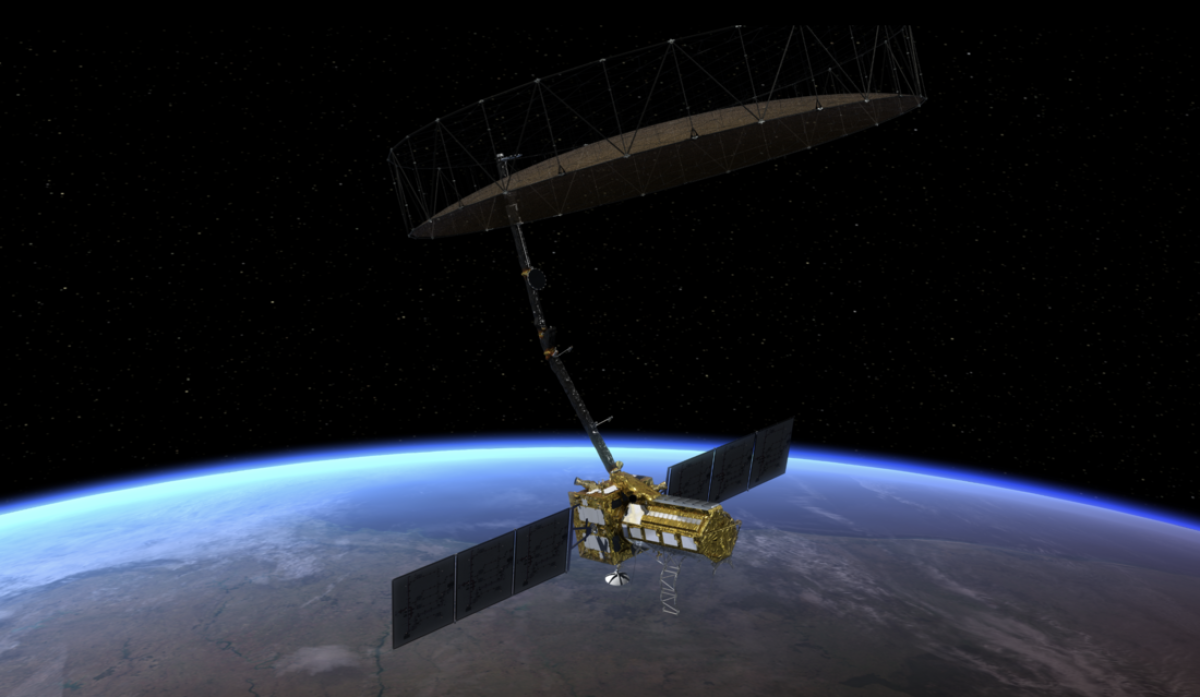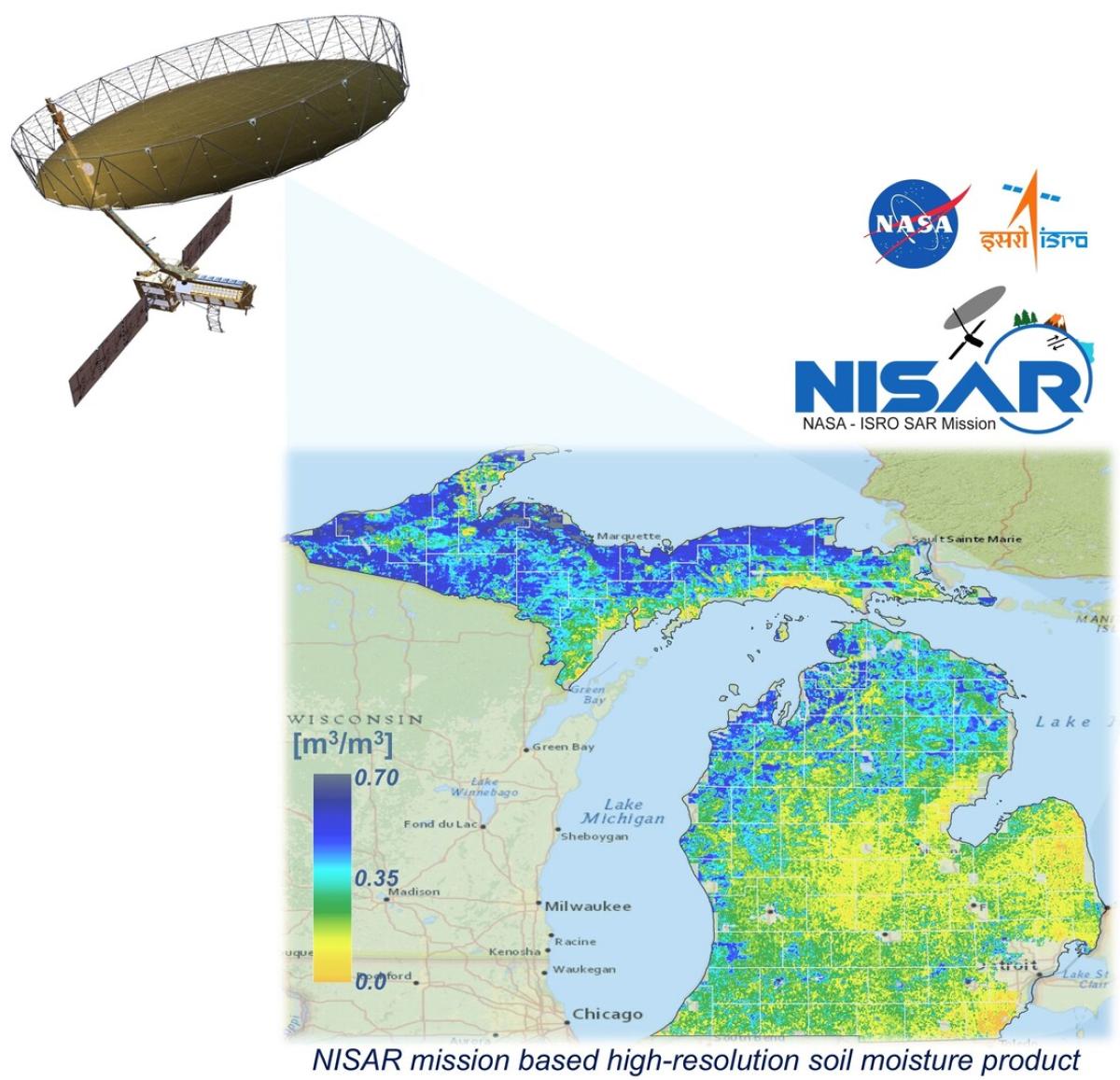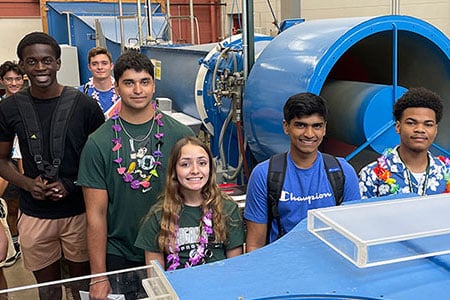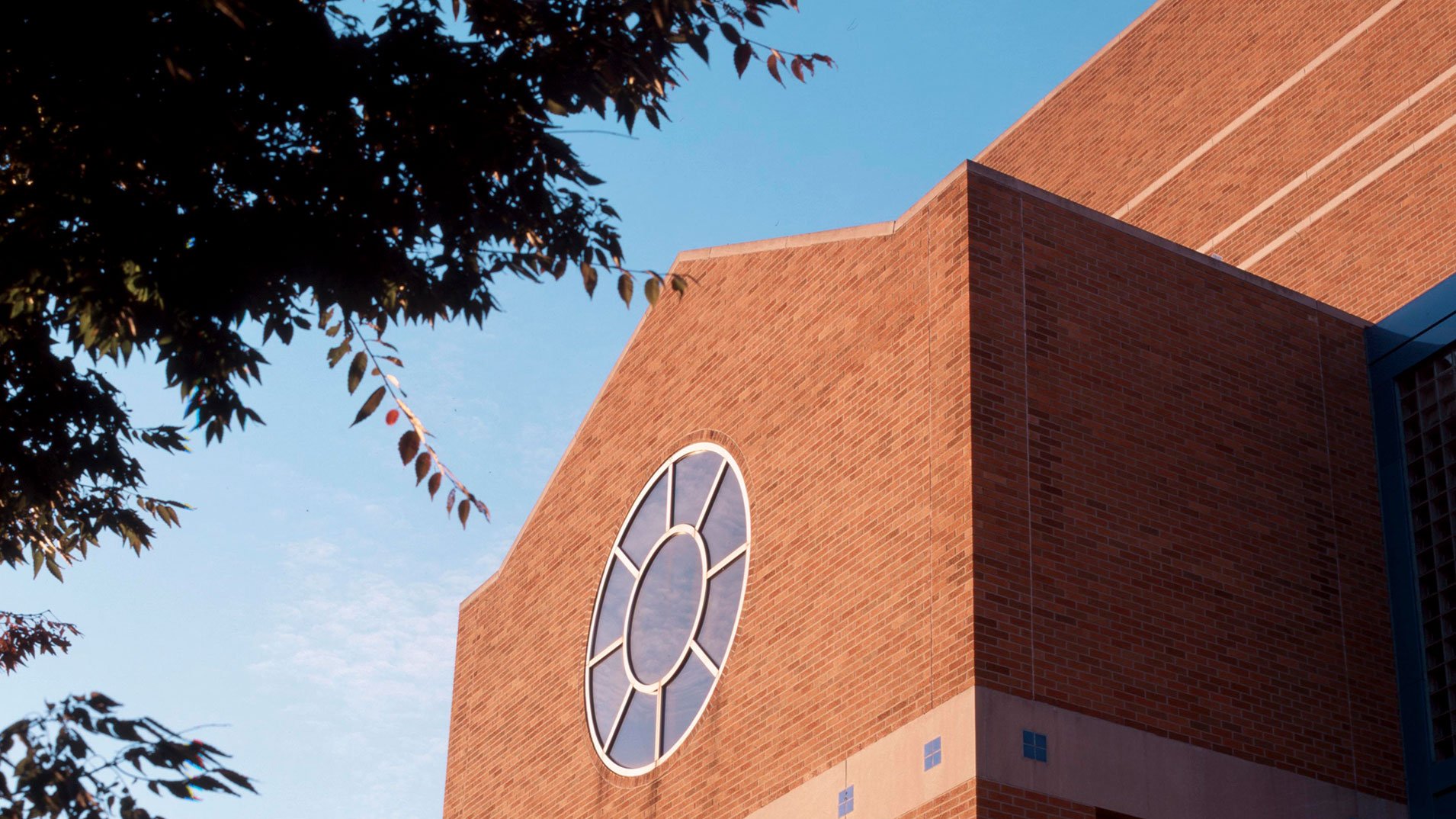Why this matters:
- This is the first time NASA and the Indian Space Research Organization have joined for a mission.
- The NISAR mission will provide unprecedented data about the Earth’s surface every six to 12 days.
- The data from this mission will help farmers in Michigan, the U.S. and around the world by providing never before available information to make crop planting and harvesting decisions.
- Michigan State University researchers developed the technology, which produces high spatial resolution soil moisture images at approximately 100 to 200 meters resolution.
EAST LANSING, Mich. – When NASA’s latest satellite mission scans the entire Earth, there will be technology developed at Michigan State University that will provide unprecedented information to help farmers make farm management decisions from crop planting to harvesting.

In a first-time collaboration between NASA and the Indian Space Research Organization, or ISRO, in India, the NASA-ISRO Synthetic Aperture Radar, or NISAR, mission is scheduled to launch July 30, 2025. The satellite will circle the Earth at an altitude of 747 kilometers, or 464 miles, for the next three years. The goal of the mission is to monitor Earth’s changing surface while following the growth of crops from planting to harvesting. This information could provide new insights into agricultural practices that determine the timing for planting crops or irrigating.
Narendra Das, an associate professor in MSU’s College of Engineering, is a member of NASA’s NISAR science team. He created the algorithm that includes the steps and software that uses the data from NISAR’s Synthetic Aperture Radar, or SAR, to create an image revealing levels of soil moisture at a resolution of approximately 100 to 200 meters.

SAR works by beaming radar pulses from the satellite that bounce off Earth’s surface and return to the satellite, creating a detailed image of the Earth’s surface features. SAR does not need perfectly clear skies or even sunlight to take these measurements from space. It can see through clouds and can remotely sense the Earth during the day or night. This means that NISAR will have updated information about changes to Earth’s surface features every six to 12 days.
Das and his team use SAR's L-band frequency, which is 1.25 GHz. Frequency bands are a specific range of frequencies within the electromagnetic spectrum used for transmitting signals, particularly in telecommunications. The L-band frequency can penetrate thick forest vegetation, reveal things like tree trunks or boulders on the ground and estimate forest biomass, which plays a key role in the global carbon cycle.
The result of the SAR data and Das' technology is an image that can estimate the amount of water in the soil surface at a level of detail that has never been done before. This will help farmers, water resource managers and industry managers track crop growth, plant health and soil moisture, which has applications for current agricultural needs to increase crop yield and to prepare for food security in the future.
“NISAR will revolutionize farming and the technology that we created will help farmers in Michigan, the U.S. and around the world,” said Das. “We want to help farmers determine the best time to plant or irrigate a new crop to produce optimal results.”
Das explained that the soil-moisture data could have other potential applications for being able to monitor for droughts and forest fire risk in near real time.
The next step for Das and his team, including Brook Wilke, an associate director at Kellogg Biological Station, and Gurjeet Singh, a research associate in the College of Engineering, involves working on the calibration and validation of the high-resolution (100 to 200 meters) soil moisture measurements to ensure that the measurements are reliable, accurate and precise.
“I consider the NISAR mission a once-in-a-generation opportunity,” said Das. “Being part of this mission is not just a professional milestone — it is the realization of a long-held dream of working on a joint research project between the U.S. and India. We can’t wait to get started!”
MSU College of Engineering Media and Public Relations page





